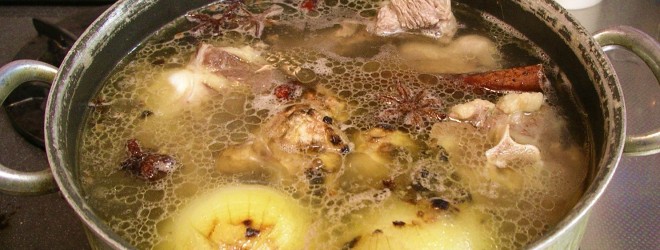According to Ayurveda, goat meat is one of the few types of meat that is suitable to all three doshas, a virtue seemingly understood by peoples throughout Asia, making it one of the most commonly consumed meats. For one thing, goat meat brings none of the religious baggage of other meats, and is equally consumed by almost all peoples, including Hindus, Muslims, Jews and Christians. From a nutritional perspective, goat meat is very dense in nutrients, especially when prepared as a stew, which usually includes bone and marrow. Being curious browsers rather than focused grazers, goats consume a broader array of plant foods and nutrients than ruminants like beef or bison, which may explain why goat meat has a more balancing, harmonizing effect. Pasture-raised goat meat can often be found at halal and East Indian butchers.
The following recipe is a basic curry, for which any meat can be used, adjusting the cooking time as needed. Likewise, the mixture of herbs called the masala can vary depending on the flavors desired. This recipe has a mixture of sweet, bitter and pungent flavors, which has a balancing, harmonious effect in the body.
Ingredients
3-4 lbs. goat meat, bone in
2 onions, finely chopped
2-3 stalks celery, finely chopped
2 medium zucchinis, in large 1 inch chunks
2 tsp. cumin seed
1 tsp. black mustard seed
2-3 tsp. coriander seed powder
½ tsp. turmeric
½ tsp. fenugreek seed
10 cardamom pods, crushed
2-3 sticks of cinnamon
6-8 cloves
6-8 garlic cloves, chopped
1 thumb-sized piece of fresh ginger, grated
1 sprig of curry leaves, separated from stem
1 tsp. black pepper
1 tsp. pink salt (sanchal)
2-3 tbsp. ghee
2 cups soup stock
Directions
In a large heavy-bottom pot, sauté the cumin, black mustard, fenugreek, cardamom, cinnamon and cloves in ghee over a medium heat. As the mustard seed begins to pop, add in the coriander seed powder, turmeric and pink salt. Add in garlic, ginger, and goat meat. Brown the meat in the spices and ghee for about 5-10 minutes and then add onions, celery and zucchini, and cook until the onions become a little translucent. Add in enough soup stock to cover, bring to a boil, reduce to a simmer and cook at low heat for 3-4 hours, or 1 hour in a pressure cooker at 15 psi. Approximately 10-15 minutes before serving, sauté fresh curry leaves with fresh crushed black pepper in a tablespoon of ghee at medium heat, for several minutes, but do not blacken. When the goat stew is done, remove the lid and add in the curry leaf and black pepper mixture, and allow to infuse into the stew for several minutes before serving. Serves four or more people.



